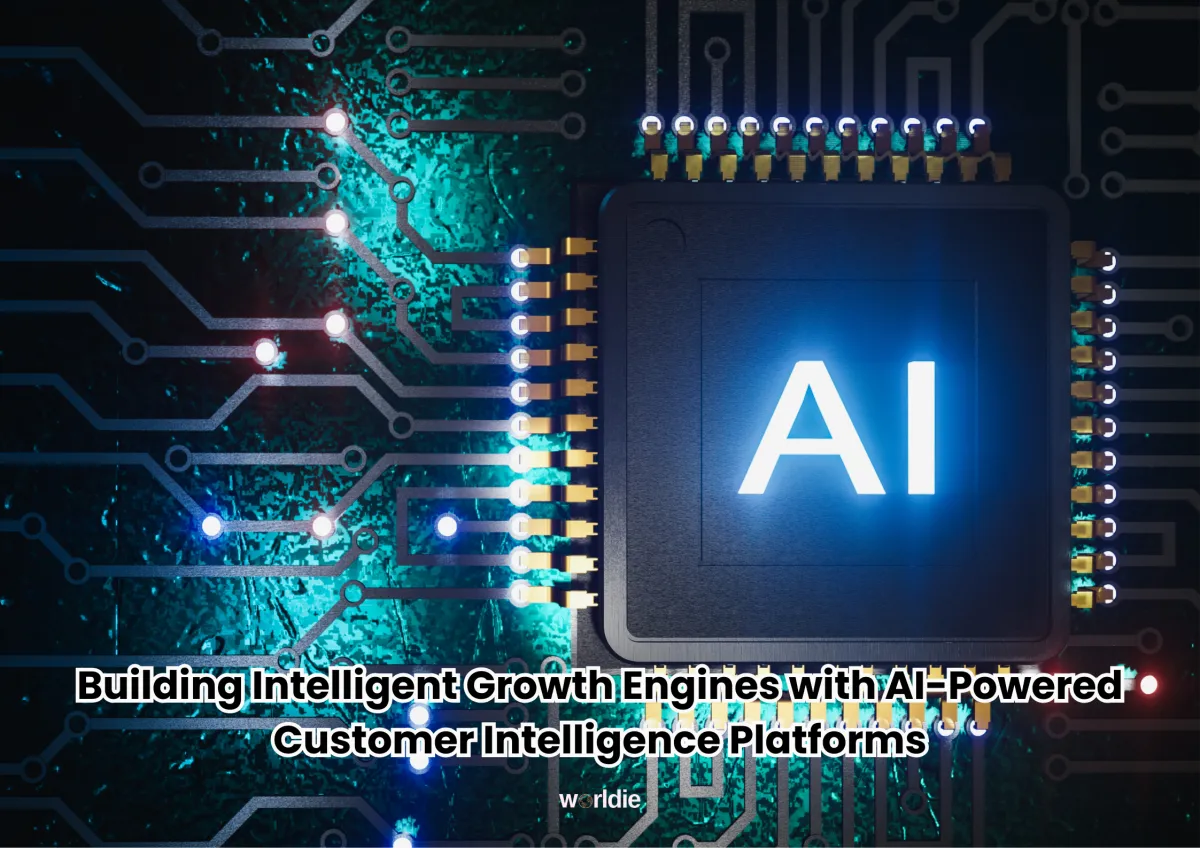
Building Intelligent Growth Engines with AI-Powered Customer Intelligence Platforms
Understanding customers has always been the cornerstone of successful business growth, but the rules of engagement have changed. Traditional analytics are no longer enough to capture the nuances of customer behavior, intent, and decision-making. This is where AI-powered customer intelligence platforms redefine the game. These systems go beyond static data—they learn, predict, and adapt, giving businesses a living, breathing understanding of their markets.
For organizations that want to outpace competitors, AI is no longer a luxury. It’s the strategic brain behind every growth decision. Worldie AI is at the forefront of building these intelligent ecosystems, enabling businesses to turn data into foresight, and foresight into measurable revenue growth.
What AI-Powered Customer Intelligence Really Means
At its core, an AI-powered customer intelligence platform combines artificial intelligence, data analytics, and behavioral modeling to uncover insights about customers that human teams would miss. It doesn’t just track what people buy—it decodes why they buy, when they’re most likely to convert, and how they’ll behave next.
These systems integrate massive data streams—from CRM systems, customer support, website interactions, and social media—to generate an intelligent view of every customer touchpoint. The result is a unified understanding that allows teams to act with precision instead of assumption.
Why Traditional Analytics Fall Short
Many organizations still rely on dashboards that show what happened last week or last quarter. While useful for historical reporting, they fail to offer predictive power. Business leaders can’t afford to wait for hindsight in markets that evolve daily.
Traditional systems also struggle with unstructured data—like customer feedback, chat logs, or video interactions—where the real emotional cues of customer behavior are buried. AI bridges this gap by interpreting those signals in real time, detecting sentiment, intent, and opportunities that would otherwise remain hidden.
AI as a Growth Engine, Not Just a Tool
The biggest misconception about AI in customer intelligence is that it’s merely a data processing tool. In reality, it’s a strategic growth engine that reshapes decision-making across every department.
Marketing teams use AI to predict campaign performance and optimize targeting before spending a single dollar. Sales teams rely on AI-driven insights to identify which leads are most likely to close. Product teams analyze behavioral data to prioritize features customers truly want. Every insight generated by AI contributes to a cycle of continuous improvement—one where decisions are driven by intelligence, not instinct.
How AI-Powered Customer Intelligence Platforms Drive Business Growth
The true power of AI lies in its ability to transform fragmented customer data into an interconnected ecosystem of insights. It enables businesses to move from reactive to proactive.
Companies leveraging these systems often see faster deal cycles, improved retention rates, and more personalized customer experiences. For example, an AI model can detect when a customer is likely to churn and automatically trigger targeted offers or support interventions. Over time, this kind of automation not only boosts loyalty but also reduces acquisition costs.
Use Cases Across Industries
In retail, AI helps predict buying trends before they happen, allowing brands to manage inventory more efficiently and personalize product recommendations.
In financial services, predictive intelligence identifies clients at risk of attrition, uncovers hidden fraud patterns, and tailors investment opportunities.
In healthcare, AI systems analyze patient data to anticipate treatment needs and improve service delivery.
And in B2B environments, companies use AI-powered intelligence to score leads, forecast demand, and refine pricing models with remarkable accuracy.
Each of these examples demonstrates one truth: the ability to understand customers faster and deeper directly translates to growth.
The Worldie AI Approach: Design → Build → Release
Worldie AI follows a three-stage framework to help businesses implement intelligent customer systems effectively.
The Design phase focuses on understanding a company’s goals, customer journey, and data maturity. Every AI initiative must start with strategy, not software.
During the Build phase, our engineers and data scientists create custom AI models, integrate relevant data pipelines, and set up feedback loops that continuously refine accuracy.
Finally, in the Release stage, we deploy and train teams to operationalize AI across departments. This ensures that every insight generated drives action, not just reports.
Common Challenges in AI Implementation
While the benefits are significant, adopting AI-powered customer intelligence comes with challenges. Many organizations underestimate the importance of data quality—AI is only as good as the data it learns from. Integrating multiple data systems can also be complex, especially in legacy environments.
Cultural alignment is another hurdle. Shifting from intuition-based to data-driven decision-making requires not just new tools, but new mindsets. This is where Worldie AI’s consulting and enablement support become invaluable—ensuring that leadership, teams, and systems align around intelligent growth.
Measuring Success in AI-Driven Intelligence
Success in AI deployment is measurable, not abstract. It’s reflected in how quickly insights translate into outcomes. Metrics often include higher conversion rates, reduced churn, improved forecasting accuracy, and faster decision cycles.
Over time, these gains compound. When a business continuously learns from its customers and automates intelligent actions, it builds an operational advantage that competitors can’t easily replicate.
Real-World Transformations
Consider a subscription-based company struggling with high churn. After integrating an AI-powered customer intelligence platform designed by Worldie AI, they discovered patterns in customer engagement that signaled dissatisfaction weeks before cancellations occurred.
By automating retention interventions based on those signals, the company increased renewal rates by over 30%. Similar outcomes have been seen in retail, finance, and technology sectors—where AI not only optimized operations but fundamentally redefined how decisions were made.
Building for the Future with AI-Powered Customer Intelligence
The future of business growth will be defined by companies that know their customers better than anyone else—and act on that knowledge faster than anyone else. AI makes that possible by transforming data into dynamic intelligence.
For forward-thinking businesses, investing in customer intelligence platforms isn’t about keeping up—it’s about leading the next wave of growth. And with Worldie AI, that transformation becomes tangible, measurable, and scalable.
FAQs
1. What exactly does an AI-powered customer intelligence platform do?
It gathers, processes, and analyzes customer data from multiple touchpoints—like CRM systems, transactions, emails, and social interactions—to deliver actionable insights. It predicts customer behavior, identifies emerging trends, and helps teams personalize strategies in real time.
2. How long does it take to implement such a system?
Implementation time depends on data maturity and system complexity. For most mid-size organizations, it ranges from a few weeks to several months. The key is integrating existing systems efficiently and ensuring that teams are trained to interpret and act on the insights.
3. Can AI work with limited or unstructured data?
Yes. Modern AI models excel at working with unstructured data like text, audio, and video. They can uncover insights from call transcripts, customer feedback, or even visual patterns that traditional analytics tools would overlook.
4. What are the most common challenges businesses face during AI adoption?
Poor data quality, disconnected systems, and lack of organizational buy-in are the biggest barriers. Businesses succeed when they start small, focus on measurable outcomes, and scale once the first AI-driven wins are proven.
5. How does Worldie AI ensure a return on AI investment?
Worldie AI takes a results-first approach. By aligning every AI initiative with core business metrics—like retention, revenue, or productivity—we ensure that intelligence translates directly into impact. Continuous monitoring and refinement help maintain value long after deployment.

